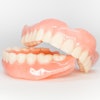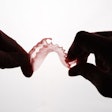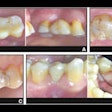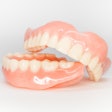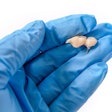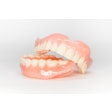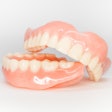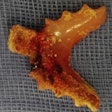
With the Hispanic and Latino populations in the U.S. projected to increase from 16.7% to 30% by 2050, researchers from the University of North Carolina at Chapel Hill and other institutions carried out what is perhaps the first comprehensive study on the prevalence of caries and tooth loss in these communities.
In their study, researchers found, or were reminded, that as far as oral health status is concerned, Hispanics and Latinos in the United States are not a homogeneous group (Journal of the American Dental Association, June 2014, Vol. 145:6, pp. 531-540).
“The results show that as far as oral health status is concerned, Hispanics and Latinos in the United States are not a homogeneous group.”
The Hispanic Community Health Study/Study of Latinos is a multicenter epidemiologic study funded by the National Heart, Lung, and Blood Institute, along with the National Institute of Dental and Craniofacial Research and other institutes. The study encompassed several facets of health such as cardiovascular disease, stroke, asthma, chronic obstructive lung disease, sleep disorders, hearing impairment and tinnitus, diabetes, kidney and liver diseases, cognitive impairment, dental caries, and periodontal disease.
Researchers conducted in-person examinations and interviews with more than 16,000 participants ages 18 to 74 years in four U.S. cities (Chicago, Miami, San Diego, and New York City) between March 2008 and June 2011. They identified missing, filled, and decayed teeth of the participants.
More than 15,800 study participants completed the dental caries portion of the examination, with almost 9,5000 women (mean age of 46) and more than 6,300 men (mean age of 45 years) participating. Study investigators selected the communities because they had a strong community structure and stable Hispanic and Latino populations with residents with Mexican, Cuban, Puerto Rican, Dominican, Central American, and South American origins, the authors noted.
The researchers found that oral health status differs according to Hispanic or Latino background, even after adjusting for age, sex, and other characteristics. The prevalence of decayed surfaces ranged from 20.2% to 35.5%, depending on background, whereas the number of decayed and filled surfaces ranged from 82.7% to 87.0%, which indicated a substantial amount of dental treatment. The prevalence of missing teeth ranged from 49.8% to 63.8% and differed according to background.
The overall prevalence of one or more decayed surfaces was 29.9% of participants, ranging from 20.2% among those identifying as Dominicans to 35.5% among Central Americans. The overall prevalence of participants with one or more decayed or filled surfaces was 85%.
Participants of Cuban and Central American backgrounds had a higher prevalence of root surface decay (17% and 15%, respectively), and 57% of the participants had at least one missing tooth, with those of Cuban, Dominican, Central American, and South American backgrounds having higher rates. Participants of Mexican background had the lowest prevalence of missing teeth at 49.8%. The overall prevalence of edentulous participants was 4.1%, with those of Cuban background having the highest prevalence rate at 6.6%.
Results an important resource
The "breadth and depth" of the data collected will make this an important resource in delineating potential social, behavioral, cultural, nutritional, and biological characteristics of study participants of different Hispanic and Latino origins, the study authors concluded.
The significant number of participants in this study makes this the first useful estimates of oral health among Hispanics and Latinos in the U.S., broken down by participants' country or region of origin. The results suggest that practitioners should consider the association between Hispanic or Latino origin and oral health status, the authors noted. This could mean that in a dental practice located in an area populated by patients from a single Hispanic or Latino background, practitioners could perhaps anticipate a practice based on a specific pattern of treatment needs.



